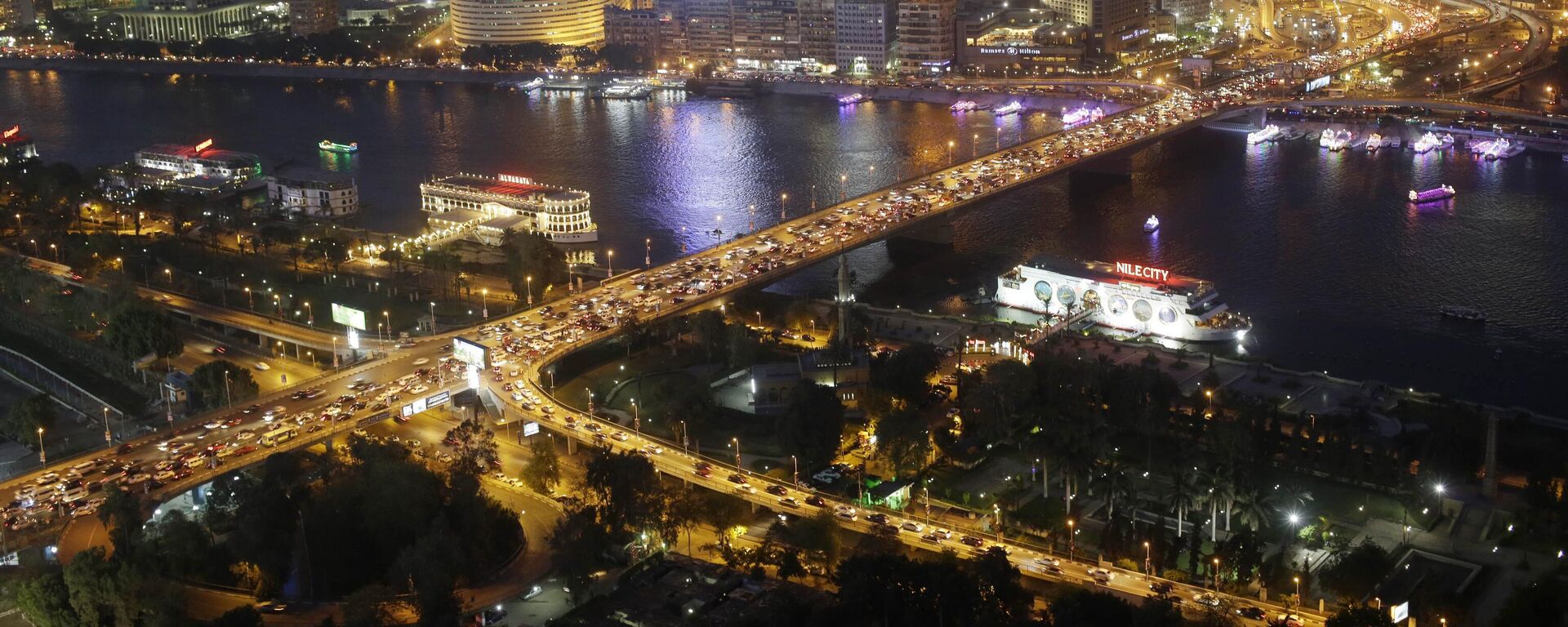Africa Industrialization Day: Celebrating Past, Present & Future of African Industry

© AP Photo / FABIAN BIMMER
Subscribe
Africa, home to 1.3 billion people and 55 countries, is a continent with great potential for industrial development, as it has abundant natural resources, a large and young population, and a growing market. However, Africa also faces many challenges, such as poor infrastructure, low productivity, weak competitiveness, and limited market access.
One of the key drivers of economic and social transformation in Africa is industrialization, the process of developing and expanding the manufacturing, technology, infrastructure, and human capital sectors of the economy.
Industrialization can enhance productivity, increase the capabilities of the workforce, generate employment, and diversify the economy. It is also seen as a key factor contributing to poverty eradication, wealth creation, and strengthening of economic structures.
To raise awareness and mobilize support for industrial development in Africa, the United Nations (UN) General Assembly, in December 1989, proclaimed 20 November as Africa Industrialization Day. Since then, the UN System, the African Union (AU), and other partners have held events on that day throughout the world to celebrate the achievements and potentials of industrialization in Africa, as well as to highlight the challenges and opportunities that lie ahead.
The theme for 2023 is "Accelerating Africa’s Industrialization Through The Empowerment Of African Women In Processing For An Integrated Market."
History of Africa Industrialization Day
The idea of dedicating a day to promote industrialization in Africa emerged from the Organization of African Unity (OAU), the predecessor of the African Union, during its 25th Ordinary Session of the Assembly of Heads of State and Government in Addis Ababa, Ethiopia, in July 1989.
During this session, the OAU also declared the period 1991-2000 as the Second Industrial Development Decade for Africa (IDDA II), following the first decade (1980-1990) that had achieved little progress due to various internal and external factors.
The IDDA II aimed to accelerate industrialization through the implementation of national and regional programs and projects, as well as the mobilization of domestic and external resources. The OAU also requested the UN to support its efforts by declaring 20 November as Africa Industrialization Day.
The UN responded positively to the OAU's request and adopted the resolution 44/237 in December 1989, which recognized the need for the international community to intensify its cooperation with Africa in the field of industrial development.
The first Africa Industrialization Day was observed in 1990, with various events and activities organized at the national, regional, and global levels. Since then, the day has been observed annually, with different themes and focuses each year, reflecting the changing priorities and challenges of industrial development in Africa.
Overview of Africa's Industrial Sectors
Africa's industrial sectors are diverse and dynamic, ranging from traditional sectors such as agriculture, mining, and manufacturing, to emerging sectors such as information and communication technology, renewable energy, and creative industries.
According to a report on the Economic Development in Africa issued by the United Nations Conference on Trade and Development (UNCTAD), the share of industry in Africa’s GDP increased from 27.4% in 2000 to 29.4% in 2019, while the share of manufacturing increased from 10.5% to 11.1% in the same period.
However, Africa’s industrialization level remains low compared to other regions, as the continent accounts for only 1.8% of global manufacturing value added and 2.2% of global merchandise exports.
One way to measure the progress and potential of industrialization in Africa is to look at some of the major industrial projects that have been implemented or are under construction in recent years, as well as those that are planned in various countries and regions of the continent.
Some of the major African industrial projects that have been or are being implemented in recent years include:
The Grand Ethiopian Renaissance Dam (GERD), which is a hydroelectric power project on the Blue Nile River in Ethiopia, with a planned installed capacity of 6,450 megawatts (MW), making it the largest hydroelectric power plant in Africa and the seventh-largest in the world. It was opened in July 2020.
The Mombasa-Nairobi Standard Gauge Railway (SGR), which is a railway project connecting the port city of Mombasa and the capital city of Nairobi in Kenya, with a total length of 472 kilometers (293 miles), making it the largest infrastructure project in Kenya’s history and the first phase of the East African Railway Master Plan it was opened in May 2017.
The Dangote Refinery, which is a petroleum refinery project in Lagos, Nigeria, with a planned capacity of 650,000 barrels per day (bpd), making it the largest single-train refinery in the world and the largest industrial complex in Africa. It was inaugurated in May 2023.
The Mohammed VI Tangier Tech City, which is a smart city project in Tangier, Morocco, with a planned area of 2,000 hectares (4,942 acres), making it the largest industrial park in Africa and the first Chinese-built smart city in the continent. Construction of the project is expected to be completed by 2027.
The Inga III Dam, which is a hydropower project on the Congo River in the Democratic Republic of the Congo, with a planned capacity of 11,050 MW, making it the largest hydropower project in Africa and the third-largest in the world. The dam is currently under construction and is expected to be completed by 2026.
Some of the planned large projects seen as factors of industrialization in Africa include:
The Trans-African Highway Network, which is a road network project connecting the major cities and regions of Africa, with a planned total length of 60,000 kilometers (37,282 miles), making it the largest road network project in Africa and the world.
The African Continental Free Trade Area (AfCFTA), which is a trade agreement project among 54 African countries, with a planned market size of 1.3 billion people and a combined GDP of $3.4 trillion, making it the largest free trade area in the world by number of countries.
The Grand Inga Dam, which is a hydropower project on the Congo River in the Democratic Republic of the Congo, with a planned capacity of 39,000 MW, making it the largest hydropower project in the world and the largest industrial project in Africa.
The African Super Grid, which is an electricity transmission network project connecting the existing and planned power grids of Africa, with a planned capacity of 400 gigawatts (GW), making it the largest electricity transmission network in Africa and the world.
The African Union Space Agency, which is a space agency project for the coordination and development of space activities in Africa, with a planned headquarters in Cairo, Egypt, making it the first continental space agency in Africa and the world.
Dominant Industries in Africa
According to the UNIDO Competitive Industrial Performance (CIP) Index 2020, which measures the industrial competitiveness of 152 countries based on their industrial capacities, capabilities, and performance, the top ten most competitive industrial countries in Africa are:
1.
South Africa, ranked 45th in the world, with a CIP score of 0.137 and a manufacturing value added (MVA) of $35.4 billion in 2019.2.
Egypt, ranked 46th in the world, with a CIP score of 0.135 and an MVA of $31.6 billion in 2019.3.
Morocco, ranked 54th in the world, with a CIP score of 0.114 and an MVA of $18.8 billion in 2019.4.
Tunisia, ranked 58th in the world, with a CIP score of 0.104 and an MVA of $8.8 billion in 2019.5.
Algeria, ranked 62nd in the world, with a CIP score of 0.096 and an MVA of $14.4 billion in 2019.6.
Nigeria, ranked 66th in the world, with a CIP score of 0.088 and an MVA of $16.1 billion in 2019.7.
Kenya, ranked 76th in the world, with a CIP score of 0.071 and an MVA of $4.9 billion in 2019.8.
Ghana, ranked 80th in the world, with a CIP score of 0.066 and an MVA of $3.4 billion in 2019.9.
Ethiopia, ranked 81st in the world, with a CIP score of 0.065 and an MVA of $4.5 billion in 2019.10.
Tanzania, ranked 84th in the world, with a CIP score of 0.062 and an MVA of $3.6 billion in 2019.The dominant industries in Africa vary by country and region, depending on their natural resources, human capital, infrastructure, and market access. Some of the common and prominent industries in Africa include:
1. Agriculture, which is the backbone of many African economies, accounting for 15.4% of the continent’s GDP and employing 54.6% of the labor force in 2019. Agriculture in Africa is mainly dominated by smallholder farmers, who produce a variety of crops and livestock, such as cereals, tubers, fruits, vegetables, coffee, cocoa, tea, cotton, sugar, meat, milk, eggs, and fish.
2. Mining, which is a major source of revenue and foreign exchange for many African countries, accounting for 8.5% of the continent’s GDP and 39% of its merchandise exports in 2019. Mining in Africa is mainly dominated by large-scale operations, which extract a variety of minerals and metals, such as gold, diamonds, platinum, copper, iron ore, coal, uranium, and rare earths.
3. Manufacturing, which is a key driver of economic and social transformation, accounting for 11.1% of the continent’s GDP and 18.5% of its merchandise exports in 2019. Manufacturing in Africa is mainly dominated by light industries, which produce a variety of consumer goods, such as textiles, clothing, leather, footwear, food, beverages, tobacco, wood, paper, and plastics.
In recent years, automobile manufacturing in Africa has been a growing industry that showcases the potential and diversity of the continent’s industrial sectors. There are several car manufacturing companies in Africa that produce vehicles for local and international markets.
Some of these companies include Innoson Vehicle Manufacturing (IVM) in Nigeria, Wallyscar in Tunisia, Kiira Motors Corporation (KMC) in Uganda, Birkin Cars and Optimal Energy Joule in South Africa, Giad Auto in Sudan, NamX in Morroco, and Mobius Motors in Kenya.




